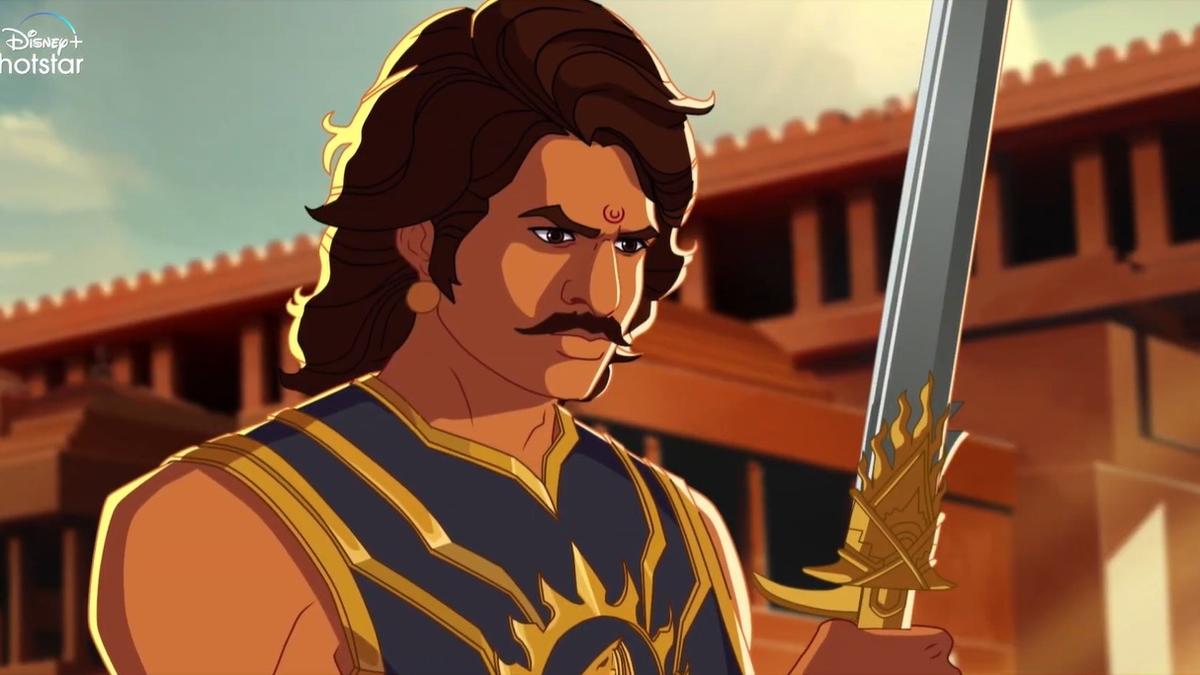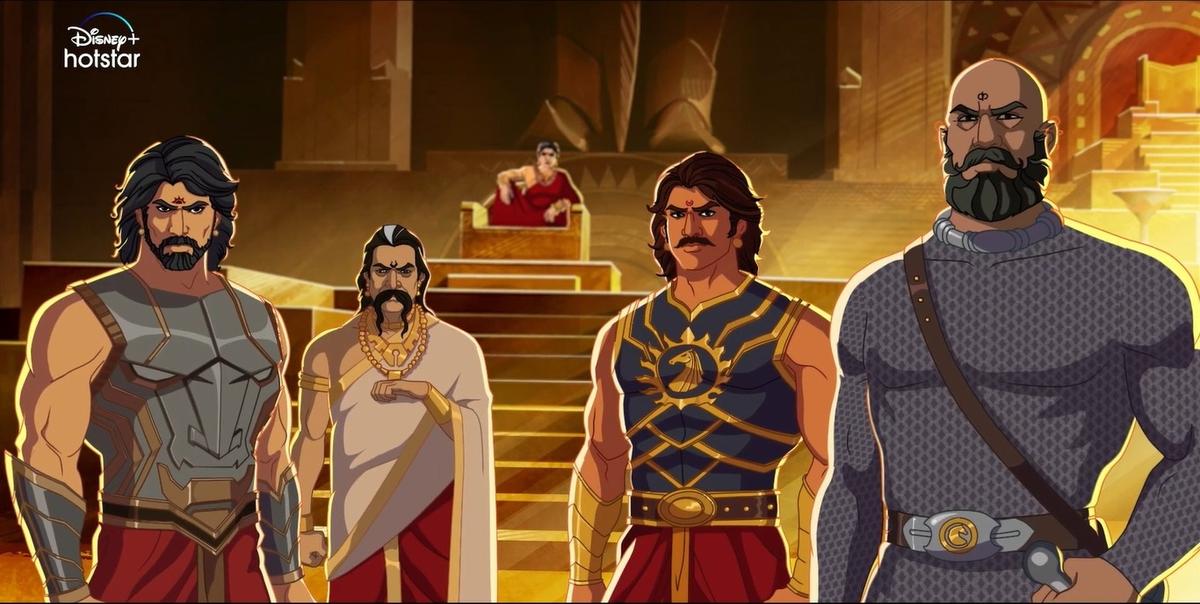
Sharad Kelkar lends his voice for Baahubali
| Photo Credit: Special Arrangement
Baahubali: Crown of Blood animation series is another attempt on the lines of international superhero films which, after becoming brands unto themselves, have spinoffs in the form of series, graphic novels and more. Directed by Jeevan J Kang and Naveen John, the series that streams on Disney+ Hotstar is a prequel to director SS Rajamouli’sBaahubali movies. The mammoth success of Baahubali: The Beginning (2015) and its sequel Baahubali: The Conclusion (2017) played a significant role in blurring regional and language barriers and paving the way for more films, including the KGF chapters, Pushpa and Rajamouli’s own RRR, to aim bigger.
Coming nine years after the first Baahubali film, Crown of Blood leverages the popularity of the charactersand is created by Rajamouli and Sharad Devarajan, who is also one of the writers of the series along with Sarwat Chadda, Jeevan J Kang and Shivangi Singh. On the heels of the Baahubali films, we have also had writer Anand Neelakantan’s trilogy book series Baahubali: Before the Beginning exploring the life of Sivagami before she became the queen mother of the Mahishmati kingdom. An adaptation of this into a digital series was in the works, but called off at a later stage. Rajamouli and Sharad Devarajan are also credited as creators for the 2017 series Baahubali: The Lost Legends.
Baahubali: Crown of Blood delves into events that happened before the film, in which Baahubali and Bhallaladeva come together to fight an enemy and in the process, discover dark secrets. The Hindi series unfolds in nine episodes, with the first being nearly 30 minutes long and the rest, 19 to 22 minutes. The Hindi version benefits from the voices of actors who had also lent their voices to the characters in the films — Sharad Kelkar for Baahubali, Samay Thakkar for Kattappa, Mausam for Sivagami and Manoj Pandey for Bhalladeva. The series has also been dubbed in Telugu, Tamil, Kannada and Tamil; the Telugu version (two episodes of which were screened for the media in Hyderabad) would have benefitted hugely had the makers roped in Prabhas and Rana Daggubati to lend their voices for Baahubali and Bhallaladeva, to maximise the connect the audience continue to have with the characters.

Baahubali: Crown of Blood (Hindi, dubbed in Telugu, Tamil, Malayalam and Kannada)
Directors: Jeevan J Kang and Naveen John
Creators: SS Rajamouli and Sharad Devarajan
Storyline: A prequel to the Baahubali movies, the animation series explores how Baahubali and Bhallaladeva came together to fight an enemy for the Mahishmati kingdom, despite their differences and discovered a dark secret.
Streaming on: Disney+ Hotstar
The animated characters closely resemble the actors who played the popular characters — Prabhas as Baahubali (though in several frames the animated character also resembles Mahendra Singh Dhoni), Rana Daggubati as Bhallaladeva, Ramya Krishna as Sivagami, Satyaraj as Kattappa and Nassar as Bijjaladeva. That helps to hold attention to an extent though the quality of animation itself leaves a lot to desire. The characters of Devasena and Avantika have no place in the series since this story pre-dates Baahubali: The Beginning.


Baahubali: Crown of Blood is a prequel to the Baahubali films
| Photo Credit:
Special Arrangement
We are introduced to a chapter during which the Mahishmati kingdom is challenged by an imposing character named Raktadeva. As a prelude, in the opening episode, we learn of a ploy to drive a wedge between Mahishmati and Garuda Rajyam and Baahubali smells something fishy.
In the course of the story, we are also taken back in time sporadically to the childhood of Amarendra Baahubali and Bhalla to throw light on events that shaped them as the men they grew up to be — Amarendra Baahubali as a warrior empathetic to the suffering of the people and Bhalla as the cold-hearted warrior driven by power and authority. The episodes are also packed with instances of how Baahubali turns out to be a saviour for the young and the old in distress and it aligns with the portion in the second film that showed Baahubali and Devasena living among the people, sharing their smiles and woes, becoming leaders of the people.

Much of the tropes and the character traits of the principal players are in sync with that of the film. While this helps stay true to the movie’s spirit, it also dampens the scope for surprises. When a turn of events forces Kattappa into exile and joins hands with an enemy, it is easy to guess what is in store. The predictability and lack of innovativeness in writing are the biggest undoing of the series, making it boring. One of the reveals concerning Bijjaladeva’s past, however, hits hard.
Apart from the character traits, the series also stays in line with the Baahubali films’ fascination with war machines and weaponry, but these aren’t as interesting as what we saw in the films.
In a couple of scenes, Amarendra Baahubali does the heavy lifting, literally, making us draw a parallel with his son Mahendra Baahubali lifting the Shivalinga in the first Baahubali film. While his character and that of Bhalla get some scope to introspect on how they should be as a prince and future king of Mahishmati and we get a sense of their inner turmoil, Bijjaladeva’s character remains strictly one note. Sivagami fares slightly better.

The series attempts to capitalise on the popularity of the superhero characters but both the animation and the writing needed more chutzpah to emerge from the shadows of the films.





